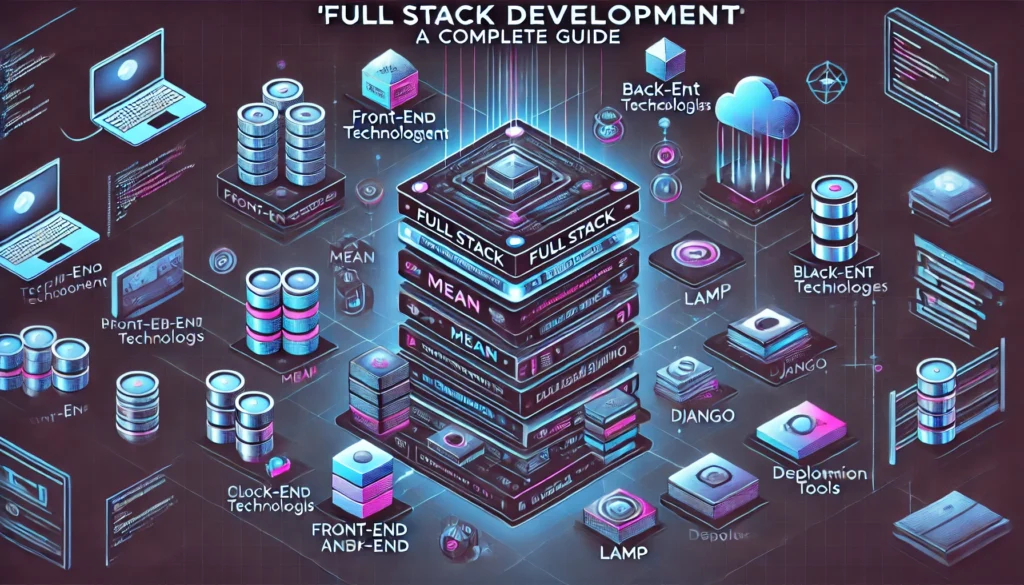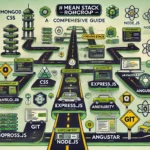
Introduction
Full Stack Development refers to the process of developing both the front-end and back-end of a web application. A full stack developer is responsible for handling everything from UI/UX design to database management, ensuring seamless user experiences and efficient data processing.
Types of Full Stack Development
There are various types of full stack development based on the technologies used:
1. MEAN Stack
- MongoDB (Database)
- Express.js (Backend Framework)
- Angular (Frontend Framework)
- Node.js (Runtime Environment)
2. MERN Stack
- MongoDB (Database)
- Express.js (Backend Framework)
- React.js (Frontend Library)
- Node.js (Runtime Environment)
3. LAMP Stack
- Linux (Operating System)
- Apache (Web Server)
- MySQL (Database)
- PHP (Backend Language)
4. Django Stack
- Python (Backend Language)
- Django (Backend Framework)
- PostgreSQL/MySQL (Database)
5. Ruby on Rails (RoR) Stack
- Ruby (Backend Language)
- Rails (Backend Framework)
- PostgreSQL/MySQL (Database)
6. .NET Stack
- C# (Backend Language)
- ASP.NET (Backend Framework)
- SQL Server (Database)
Essential Skills for Full Stack Developers
To become a proficient full stack developer, you need expertise in the following areas:
1. Frontend Development
- HTML, CSS, JavaScript
- Frontend frameworks/libraries (React, Angular, Vue.js)
- Responsive design (Bootstrap, Tailwind CSS)
- UI/UX design principles
2. Backend Development
- Server-side languages (Node.js, Python, PHP, Ruby, Java, C#)
- Backend frameworks (Express.js, Django, Spring Boot, ASP.NET)
- RESTful APIs and GraphQL
3. Database Management
- Relational Databases (MySQL, PostgreSQL, SQL Server)
- NoSQL Databases (MongoDB, Firebase, Redis)
- ORM (Object-Relational Mapping) tools (Sequelize, Mongoose, Hibernate)
4. Version Control Systems
- Git, GitHub, GitLab, Bitbucket
5. Server & Deployment
- Cloud services (AWS, Google Cloud, Azure)
- Web servers (Apache, Nginx)
- Containerization & Orchestration (Docker, Kubernetes)
- CI/CD Pipelines (Jenkins, GitHub Actions)
6. Security & Performance Optimization
- Authentication (OAuth, JWT, Passport.js)
- Encryption (SSL/TLS, HTTPS)
- Load balancing and caching (Redis, CDN)
7. Soft Skills
- Problem-solving
- Communication
- Team collaboration
- Agile methodology understanding
Why Choose Full Stack Development?
- High Demand: Full stack developers are in high demand across various industries.
- Versatility: Ability to work on different technologies and projects.
- Higher Salary Potential: Full stack developers earn competitive salaries.
- Career Growth: Opens opportunities for roles like Software Architect, Tech Lead, or CTO.


